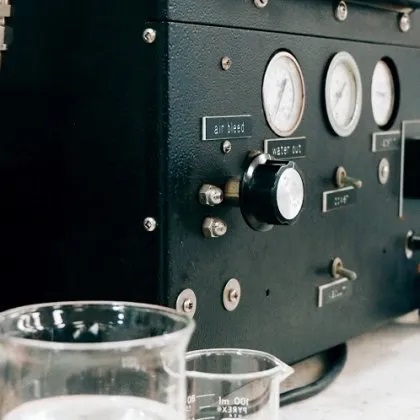Moisture and Water Activity Testing
 Vacuum oven
Vacuum oven Moisture Content
Moisture content (also known as water content) is the amount of water in a given sample. Expressed as a percentage of the total sample weight, moisture content can impact the taste, texture, and other physical properties of a product. In addition, moisture content can be an important metric for determining the expected shelf life and microbial viability of a product over time.
Because cannabis and cannabis products often sit in storage for weeks or months before making their way to dispensary shelves, it can be important to verify moisture content to ensure product quality and safety throughout this time. Moisture content that is too high may cause susceptibility to microbial growth (including mold), whereas moisture content that is too low may cause undesired changes to physical properties.
The formula for calculating moisture content is as follows:
Moisture Content = (Wet Weight) – (Weight after Drying) / (Wet Weight) x 100
To ensure consistency between test results, California Department of Cannabis Control (DCC) regulations require cannabinoids to be reported on a dry-weight basis for cannabis flowers. Thus, moisture content testing is performed on all flower samples- both compliance and R&D- when cannabinoid profiling is performed.
 Rectangle 3023
Rectangle 3023 Water Activity
Whereas moisture content measures the amount of water in a product, water activity measures how microorganisms will react to the water that is present.
In 1953, researchers determined that specific water activity ranges could be applied universally to determine optimal levels for inhibiting microbial growth. While the same determination was attempted for moisture content, it was instead proven that optimal moisture content ranges are product specific.
Calculated in terms of “relative humidity,” the formula for water activity is as follows:
Water Activity (aw) = (Vapor Pressure in Product) / (Vapor Pressure of Pure Water)
Water activity is highly dependent on temperature, increasing in warmer temperatures and decreasing in colder temperatures. As might be assumed, higher water activity levels tend to better support microbial growth, while lower water activity levels tend to indicate greater shelf stability.
As a general rule of thumb in the food industry, products with water activity above 0.85 require refrigeration or another barrier to reduce pathogenic growth. Products with water activity between 0.60-0.85 do not require refrigeration, but will have a limited shelf life. Finally, products with water activity below 0.60 are considered shelf stable, even without refrigeration.
Under California DCC regulations, water activity testing is required to be performed on all flower samples and all solid or semi-solid edible products.